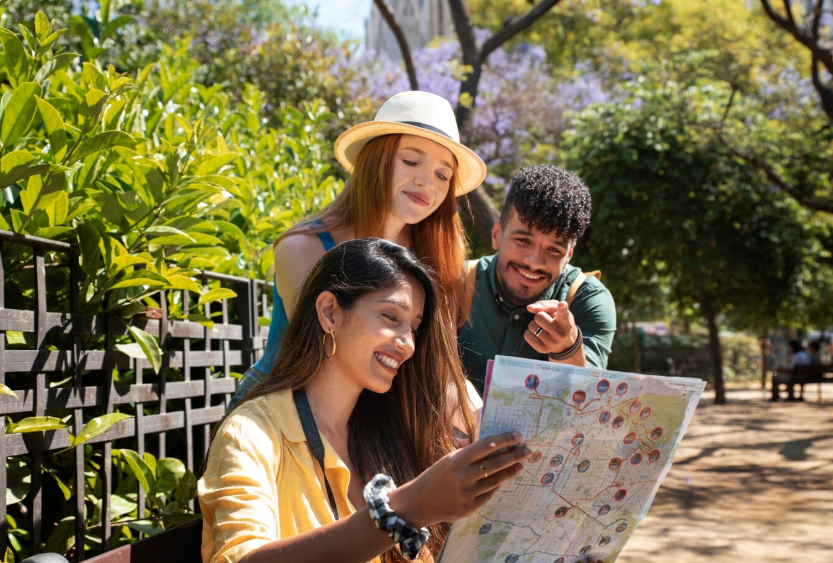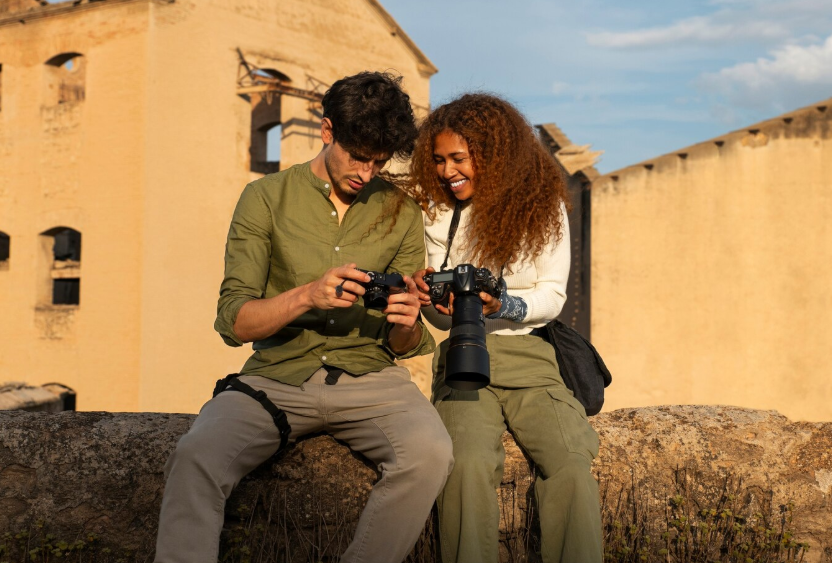
by Dulce Navarro | May 23, 2025 | Culture, Languages, Traditions, Travel, Worldwide
Reviving Dying Languages: Successful Initiatives Around the World
Language is more than just a means of communication—it is a vessel for culture, history, and identity. However, with globalization and the dominance of widely spoken tongues, many languages around the world are at risk of extinction. For company directors and professionals operating in global markets, understanding the importance of language preservation is not only culturally responsible but also strategically advantageous. Reviving dying languages fosters deeper connections with local communities, opens up untapped markets, and aligns with socially conscious branding initiatives.
The Global Language Crisis
According to UNESCO, nearly 40% of the world’s 7,000+ languages are endangered, with one language disappearing every two weeks. The loss of a language often results in the erosion of cultural heritage, traditional knowledge systems, and unique worldviews. This makes language revival efforts not only a cultural imperative but also a moral one.
For companies working in multicultural environments or with international clients, sensitivity to language diversity and inclusion can set them apart in meaningful ways. Supporting local linguistic initiatives or even integrating lesser-used languages in marketing and service delivery can create trust and loyalty among underserved communities.
Successful Language Revival Initiatives
While the task may seem daunting, there are many inspiring examples of communities and governments taking action to revive endangered languages. Here are several successful initiatives that are making a real impact:
1. Māori in New Zealand
The Māori language, or te reo Māori, faced a steep decline throughout the 20th century. In response, New Zealand implemented a wide-reaching revival plan, including immersive Māori-language preschools (Kōhanga Reo), broadcasting in te reo, and official government use of the language. These efforts have significantly increased fluency among younger generations and restored national pride.
2. Welsh in Wales
Once in decline, Welsh is now experiencing a resurgence due to strong government policies that mandate bilingual signage, Welsh-medium education, and broadcast programming. The “Cymraeg 2050” strategy aims to reach one million Welsh speakers by the year 2050, showcasing how legislative support can drive language revitalization.
3. Hebrew in Israel
One of the most remarkable revivals in modern history, Hebrew transitioned from a liturgical language to the official spoken language of Israel in the 20th century. Spearheaded by passionate educators and linguists, the revival involved standardized grammar development, dictionary creation, and national education policies.
4. Hawaiian in the United States
Efforts to preserve Hawaiian began in the 1980s through the Hawaiian Language Immersion Program. With state funding and strong community support, more schools offer Hawaiian-language instruction today, and it is increasingly used in government and cultural events.
5. Sami Languages in Scandinavia
The Sami people, spread across Norway, Sweden, Finland, and Russia, are seeing renewed interest in their languages through revitalization projects that include bilingual education, digital tools, and cultural festivals. These initiatives help preserve indigenous identity in the face of modernization and assimilation pressures.
Corporate Involvement in Language Revitalization
Business leaders and organizations can play a significant role in supporting dying languages. Multinational companies have the resources and platforms to promote linguistic diversity and raise awareness. Ways to contribute include:
- Funding educational and community programs focused on language learning and preservation.
- Offering multilingual services that include indigenous or lesser-used languages.
- Partnering with local NGOs and cultural institutions to support linguistic initiatives.
- Creating culturally sensitive marketing campaigns that incorporate local languages and symbols.
These actions not only contribute to social good but also enhance brand credibility and strengthen relationships with diverse audiences.
Technology as a Tool for Language Preservation
Digital innovation is reshaping the future of language revival. Apps like Duolingo and Memrise have begun offering endangered language modules (e.g., Navajo and Hawaiian), while AI-powered translation tools and virtual reality platforms enable immersive learning experiences.
Moreover, digital archives and voice recognition projects are preserving native speech patterns for future generations. Collaborative efforts between linguists, tech firms, and indigenous communities are leading to groundbreaking solutions for language revitalization.
Learning New Languages as an Expat: Strategies for Quick Success
As an expat, learning the local language is one of the most effective ways to integrate and thrive in a new environment. It opens doors to authentic cultural experiences, strengthens professional opportunities, and enriches everyday life.
- Engage with Locals: Use daily interactions—shopping, commuting, dining—as opportunities to practice and learn contextual language.
- Join Language Exchange Groups: Partner with a native speaker who wants to learn your language. This mutual exchange accelerates learning and builds friendships.
- Take Formal Courses: Enroll in structured language programs that match your schedule and goals. Look for immersion-style classes that focus on conversation.
- Use Digital Resources: Language apps, podcasts, and YouTube channels provide convenient and effective learning on the go.
- Immerse Yourself: Change your phone and media to the target language, and avoid defaulting to English when possible. Embrace the challenge!
Language acquisition is a journey, not a race. The key is consistency, curiosity, and courage in making mistakes. With the right mindset and tools, anyone can become conversational—and eventually fluent—in a new language.
Stay Connected for More Travel and Lifestyle Inspiration. For more insights into travel, culture, and lifestyle tips, follow me on @salvadorordorica. If you’re seeking professional translation and localization services to enhance your global ventures, visit The Spanish Group — your trusted partner in bridging cultures worldwide.

by Dulce Navarro | May 23, 2025 | Countries, Culture, Lifestyle, Traditions, Travel, Worldwide
The Power of Cultural Immersion Travel: Experiencing the World Authentically
In today’s interconnected world, travel has become more than a luxury—it’s a doorway to deeper understanding, empathy, and personal transformation. For company directors, global entrepreneurs, and curious professionals, cultural immersion travel presents an unparalleled opportunity to authentically experience life in another part of the world while enriching both personal and business perspectives.
Why Cultural Immersion Travel Matters
Unlike typical tourism, which often revolves around sightseeing and pre-packaged experiences, cultural immersion travel dives beneath the surface. It focuses on living as the locals do, understanding their customs, tasting their everyday cuisine, and participating in their daily routines. This form of travel fosters a greater appreciation for diversity and helps dismantle stereotypes, all while building stronger interpersonal and intercultural communication skills.
Benefits Beyond Sightseeing
- Deeper Cultural Understanding: Immersive travel allows individuals to see the world through a different lens. By living within a community, travelers gain insights into traditions, values, and social structures that define that culture.
- Stronger Emotional Intelligence: Experiencing cultural norms firsthand can challenge assumptions and cultivate patience, adaptability, and open-mindedness—key traits for business and leadership success.
- Professional Edge: Leaders who understand global cultures are better positioned to negotiate, collaborate, and innovate on an international scale.
- Language Skills: Being surrounded by a new language accelerates learning and helps you grasp the nuances of communication far better than any classroom setting.
How to Travel Authentically
To truly immerse yourself in a new culture, it’s important to approach travel with intentionality and openness. Here are some practical ways to ensure your experience is meaningful:
1. Live Like a Local
Skip the hotels and stay in locally owned accommodations or with host families. Explore neighborhoods off the tourist map. Shop at local markets and try regional dishes at family-run eateries.
2. Participate in Cultural Activities
Whether it’s attending a traditional cooking class in Thailand, participating in a village ceremony in Ghana, or helping with olive harvests in Italy, hands-on experiences bring cultural values to life.
3. Learn Basic Language Skills
Even learning a few essential phrases can go a long way in breaking down barriers and showing respect. Locals often appreciate the effort and may open up more readily.
4. Volunteer or Work Abroad
Volunteering or working abroad provides direct engagement with the local community, fostering mutual understanding and growth. It’s also a fantastic way to gain new professional perspectives.
5. Be a Respectful Observer
Observe local customs, dress appropriately, and avoid behaviors that may be considered offensive. Always ask questions with curiosity and humility.
Real Impact of Immersive Travel
One of the most powerful aspects of cultural immersion is the ability to carry those lessons home. Many travelers find themselves transformed—more empathetic, globally conscious, and aware of their role in the broader human experience. These shifts are particularly relevant for leaders who aim to inspire inclusive, culturally sensitive organizations.
Moreover, as sustainability and responsible travel gain momentum, immersion travel supports local economies more directly. Spending money on community-run projects, fair-trade artisans, and neighborhood businesses contributes to ethical tourism and mutual prosperity.
Learning New Languages as an Expat: Strategies for Quick Success
Moving to a new country can be both thrilling and overwhelming. One of the most valuable skills for adapting quickly is learning the local language. Here are a few proven strategies:
- Immerse Yourself Daily: Surround yourself with the language in everyday situations—listen to local radio, watch TV shows, read newspapers, and engage in conversation with locals.
- Use Language Apps: Tools like Duolingo, Babbel, or Memrise are excellent for daily practice and vocabulary building.
- Take Structured Classes: Sign up for language courses designed specifically for expats. Many community centers offer immersive programs at various levels.
- Hire a Language Coach: A private tutor or coach can tailor lessons to your specific needs and help correct pronunciation and grammar in real time.
- Practice Without Fear: Embrace mistakes and speak as much as possible. Locals generally appreciate the effort, and it’s the quickest way to improve.
Language learning is not just about communication—it’s a powerful gateway to understanding the culture, forging authentic connections, and fully enjoying your expat experience.
Stay Connected for More Travel and Lifestyle Inspiration.
For more insights into travel, culture, and lifestyle tips, follow me on @salvadorordorica. If you’re seeking professional translation and localization services to enhance your global ventures, visit The Spanish Group — your trusted partner in bridging cultures worldwide.

by Dulce Navarro | May 21, 2025 | Culture, Languages, Lifestyle, Traditions, Worldwide
Building Inclusive Communities Through Language and Communication
In an increasingly interconnected world, language remains one of the most powerful tools we have for creating inclusive communities. Whether navigating daily life in a new country, growing an international business, or simply connecting with neighbors from different backgrounds, the ability to communicate effectively and respectfully across language barriers is foundational to success and unity.
The Power of Language in Shaping Communities
Language does far more than convey information—it reflects culture, values, and identity. It is the thread that binds communities, fosters trust, and promotes shared understanding. When communication breaks down, misunderstanding and exclusion can take root. But when individuals and organizations make a conscious effort to bridge language gaps, they create opportunities for genuine connection and collective progress.
Consider public services, for example. When municipal announcements, emergency alerts, or healthcare materials are available in multiple languages, they empower non-native speakers to make informed decisions and participate fully in their communities. Similarly, inclusive education environments that embrace multilingualism lead to stronger engagement and better learning outcomes.
Communication as a Tool for Integration
For immigrants and expatriates, communication can be both the biggest challenge and the greatest catalyst for integration. Newcomers who gain proficiency in the local language are not only more likely to find employment, but also to feel a sense of belonging. They can express their needs, build relationships, and contribute meaningfully to the cultural fabric of their new home.
This is why access to affordable, quality language instruction is vital. Communities that invest in ESL (English as a Second Language) programs, cultural orientation workshops, and translation services are investing in their own strength. In doing so, they empower individuals to thrive while fostering mutual respect across cultural lines.
Inclusive Business Practices and Global Impact
Businesses, too, play a central role in building inclusive environments. In the global marketplace, companies that embrace multilingual communication not only stand out—they succeed. Whether interacting with international clients, collaborating with remote teams, or localizing marketing content, effective communication builds trust and reduces costly errors.
More than ever, inclusivity is a business imperative. Brands that translate their websites, provide customer support in multiple languages, and demonstrate cultural awareness are far more likely to attract and retain diverse customers. Employees also benefit: companies that celebrate linguistic diversity are more innovative and foster stronger team dynamics.
Technology and the Future of Language Inclusion
Technology is making it easier than ever to break down language barriers. AI-powered translation tools, multilingual chatbots, and localization software allow businesses and governments to scale their communication efforts with precision. But these tools are most effective when paired with human insight—professional translation services ensure accuracy, nuance, and cultural sensitivity that automated solutions often miss.
As we look to the future, technology will continue to shape how we communicate. However, it’s essential that we approach these advancements thoughtfully, with a commitment to equity and human connection at the core. True inclusion is not just about access to language, but about honoring the people behind each word.
Learning New Languages as an Expat: Strategies for Quick Success
As an expat, adapting to a new linguistic landscape can feel daunting—but it’s also one of the most rewarding parts of the journey. Here are a few practical strategies for achieving language success abroad:
- Immerse Yourself Daily: Surround yourself with the language—watch local TV, listen to music, and read signs and menus. Immersion builds subconscious familiarity.
- Practice with Native Speakers: Language exchanges, conversation groups, and friendly chats with neighbors all help you gain confidence and fluency.
- Use Language Learning Apps: Tools like Duolingo, Babbel, or Rosetta Stone can supplement your learning with structure and gamified lessons.
- Be Patient with Yourself: Mistakes are part of the process. Celebrate progress, no matter how small, and stay consistent.
- Take Formal Classes: If possible, enroll in a structured course. Professional guidance can accelerate your learning and ensure grammatical accuracy.
Ultimately, learning the local language unlocks deeper cultural understanding and empowers you to contribute fully to your new environment. It’s a key step toward building the inclusive, connected world we all aspire to live in.
Stay Connected for More Travel and Lifestyle Inspiration
For more insights into travel, culture, and lifestyle tips, follow me on Instagram: @salvadorordorica. If you’re seeking professional translation and localization services to enhance your global ventures, visit The Spanish Group — your trusted partner in bridging cultures worldwide.

by Dulce Navarro | May 20, 2025 | Countries, Culture, Lifestyle, Travel, Worldwide
Cultural Heritage Preservation: Stories of Traditions That Endure
In our rapidly evolving global landscape, preserving cultural heritage is more than a romantic ideal—it’s a necessity. Culture forms the bedrock of identity, social cohesion, and intergenerational continuity. As cities grow, economies globalize, and digital technologies advance, age-old traditions face unprecedented pressure. And yet, in the midst of change, there are communities and initiatives around the world that continue to breathe life into their cultural legacies.
The Value of Cultural Heritage
Cultural heritage, whether tangible like architecture and artifacts, or intangible like language, music, and rituals, tells the story of humanity. It reflects the values, histories, and wisdom of societies. More than just the past, cultural heritage helps people make sense of the present and provides a compass for future generations. UNESCO has long emphasized the importance of safeguarding heritage as a fundamental human right and a cornerstone of sustainable development.
Stories of Enduring Traditions
Japan’s Washoku Cuisine
In Japan, traditional culinary practices—collectively known as washoku—have not only survived modern fast food culture but have become globally respected for their balance, presentation, and nutritional value. Recognized by UNESCO in 2013, washoku continues to be taught from parents to children, and celebrated through national holidays and communal meals.
Mexico’s Day of the Dead
Despite modernization, Mexico’s Día de los Muertos remains a vibrant expression of cultural identity. This tradition honors deceased loved ones through altars, marigolds, and storytelling. Families across Mexico, regardless of their socioeconomic background, observe the celebration, ensuring that the tradition remains an essential part of the national identity.
India’s Handloom Weaving
In India, the age-old art of handloom weaving—once threatened by industrialization—has seen a revival through artisan cooperatives and government support. Regions like Varanasi and Kanchipuram are once again thriving hubs for traditional textiles. These fabrics, rich in symbolism and technique, continue to be worn proudly on festive and ceremonial occasions.
Scotland’s Gaelic Language Revival
The Gaelic language, once in decline, is being revived through community schooling and media in Scotland. Institutions and local leaders have launched immersion programs and media channels to bring back the language in daily use, helping to safeguard a linguistic heritage central to Scottish identity.
Technology as a Tool for Preservation
Digital archives, virtual museums, and AI-powered language tools are transforming cultural heritage preservation. Platforms such as Google Arts & Culture, for instance, allow global audiences to explore indigenous dances, traditional art, and historical monuments. By integrating technology, communities can document their customs, making them accessible across generations and geographies.
Challenges in Cultural Preservation
Despite global efforts, many traditions face threats—from urban sprawl and climate change to cultural homogenization and loss of native speakers. Migration and displacement can also weaken ties to cultural roots. It’s essential for governments, NGOs, and private sectors to collaborate on policy-making, education, and community engagement that prioritize preservation.
The Role of Businesses in Cultural Heritage
Business leaders and organizations are increasingly recognizing their role in cultural stewardship. Supporting local artisans, sponsoring heritage sites, and integrating cultural elements into branding are all ways companies can contribute. Furthermore, engaging in culturally aware practices enhances brand authenticity and strengthens connections with diverse audiences.
Learning New Languages as an Expat: Strategies for Quick Success
Language is a fundamental part of cultural heritage, and for expatriates, learning the local language can unlock meaningful experiences. Here are a few strategies for success:
- Immerse Yourself: Surround yourself with native speakers through community activities, local markets, and social groups.
- Leverage Technology: Use apps like Duolingo, Babbel, or language podcasts to stay consistent with daily practice.
- Hire a Tutor: One-on-one lessons offer personalized guidance and accountability.
- Be Patient: Language acquisition is a journey—celebrate small wins and stay committed.
By learning the language, expats not only integrate better into their host countries but also become advocates for cultural exchange and preservation.
Stay Connected for More Travel and Lifestyle Inspiration
For more insights into travel, culture, and lifestyle tips, follow me on Instagram @salvadorordorica. If you’re seeking professional translation and localization services to enhance your global ventures, visit The Spanish Group — your trusted partner in bridging cultures worldwide.

by Dulce Navarro | May 20, 2025 | Business, Culture, Lifestyle, Travel, Worldwide
The Role of Multilingualism in Shaping Vibrant Global Cities
In an era of accelerating globalization, cities around the world are transforming into multicultural hubs that thrive on diversity, innovation, and connectivity. At the heart of this transformation lies multilingualism — a powerful tool that not only enhances communication but also fuels economic growth, cultural exchange, and social cohesion. For company directors, entrepreneurs, and global leaders, understanding the role of multilingualism is key to leveraging opportunities and creating inclusive, prosperous urban environments.
Multilingualism as a Pillar of Economic Vitality
Global cities such as New York, London, Dubai, and Singapore have one thing in common: their ability to accommodate and integrate people from a variety of linguistic and cultural backgrounds. Multilingualism contributes directly to economic growth by making cities more attractive to international businesses, investors, and talent. When a city can communicate in multiple languages, it reduces barriers to entry for foreign enterprises and creates more dynamic labor markets.
In sectors like finance, tourism, education, and technology, multilingual professionals are highly valued. They facilitate client relations, improve customer service, and allow companies to tailor their offerings to diverse consumer bases. This capability also enhances export potential and global competitiveness, positioning multilingual cities as vital players on the world stage.
Cultural Enrichment and Identity
Language is more than just a communication tool — it is a carrier of culture, history, and identity. In multilingual cities, residents are exposed to a rich mosaic of traditions, cuisines, music, and perspectives. This diversity not only makes cities more vibrant and interesting but also fosters mutual respect and intercultural dialogue.
Events such as international festivals, multilingual theater productions, and cultural exhibitions become more accessible and meaningful when promoted in various languages. This inclusiveness helps integrate newcomers, promotes social unity, and enriches the collective identity of a city.
Multilingualism in Urban Governance and Public Services
City administrations increasingly recognize the importance of linguistic accessibility in delivering effective governance. From healthcare to legal systems, transportation, and education, providing multilingual support ensures that all residents can access essential services regardless of their language proficiency.
Innovative cities are adopting technologies such as multilingual mobile apps, translation kiosks, and community language support centers to address this need. In doing so, they not only improve public service delivery but also build trust and engagement with all communities.
Challenges and Strategies
Despite the many advantages, managing multilingualism in urban settings comes with challenges. These include ensuring language education equity, avoiding linguistic segregation, and addressing the potential loss of minority languages. City planners, educators, and policymakers must collaborate to implement inclusive language policies and promote lifelong learning opportunities.
Public-private partnerships can play a vital role here. Companies can support multilingual education programs, offer language training for employees, and invest in culturally competent services. For directors and executives, such efforts signal commitment to inclusivity and can significantly enhance a brand’s reputation.
Preparing Businesses for Multilingual Environments
For company directors operating in or expanding into global cities, fostering multilingualism within their organizations is a strategic imperative. This can include hiring diverse talent, offering language learning programs, and ensuring that marketing and communication strategies are culturally and linguistically adapted.
Professional translation and localization services are essential in this context. These services ensure accuracy, cultural relevance, and clarity in all business interactions, from legal documents and websites to product packaging and customer support.
Learning New Languages as an Expat: Strategies for Quick Success
For executives relocating abroad, learning the local language can significantly enhance their experience, effectiveness, and integration. Here are a few practical strategies for success:
- Set realistic goals: Aim for conversational fluency first, focusing on vocabulary and phrases relevant to your daily and professional life.
- Use immersive tools: Language apps, podcasts, and local meet-ups can provide consistent exposure and practice.
- Engage with locals: Practice regularly with native speakers and don’t be afraid to make mistakes — it’s part of the learning process.
- Take formal lessons: Enroll in language courses tailored to professionals or business contexts for structured progress.
- Stay consistent: Language learning is a long-term investment, and daily practice pays off over time.
Multilingualism is not just a benefit — it’s a necessity in today’s interconnected urban world. By embracing language diversity, we open the door to more inclusive, innovative, and prosperous cities for all.
Stay Connected for More Travel and Lifestyle Inspiration.
For more insights into travel, culture, and lifestyle tips, follow me on Instagram @salvadorordorica.
If you’re seeking professional translation and localization services to enhance your global ventures, visit The Spanish Group — your trusted partner in bridging cultures worldwide.

by Dulce Navarro | May 19, 2025 | Business, Company, Culture, Languages, Worldwide
Why Language Preservation Matters in a Rapidly Globalizing World
In today’s interconnected global society, the ability to communicate across cultures has never been more essential. Yet, amid increasing globalization, thousands of languages face extinction. While we celebrate the benefits of a connected world, we must also reflect on what we risk losing — rich linguistic heritages, cultural identities, and diverse worldviews. Preserving languages isn’t just about saving words; it’s about safeguarding the soul of humanity.
The Urgency of Language Preservation
According to UNESCO, nearly half of the approximately 7,000 languages spoken today are at risk of disappearing within a few generations. This isn’t just a linguistic concern — it’s a cultural emergency. Language encapsulates history, traditions, customs, and collective memory. When a language dies, entire knowledge systems vanish with it — from indigenous medicinal practices to oral storytelling traditions passed down over centuries.
Many endangered languages lack written scripts and rely solely on oral transmission, making them particularly vulnerable. As communities assimilate into dominant cultures and younger generations adopt more globally dominant languages, the linguistic thread connecting them to their ancestors weakens and, in some cases, is severed entirely.
Why Language Loss Affects Us All
One might assume that language extinction only affects small, isolated communities. But the impact extends far beyond. Every language offers a unique lens through which to understand the world. The disappearance of linguistic diversity limits our collective ability to appreciate alternative perspectives and solutions to global challenges.
In fields like environmental science, for example, indigenous languages often contain intricate knowledge about local ecosystems that has no equivalent in mainstream languages. Losing that linguistic diversity equates to losing invaluable insights into sustainability and conservation.
Globalization: A Double-Edged Sword
Globalization has undeniably facilitated economic growth, international collaboration, and technological innovation. However, it also encourages linguistic homogenization. English, Mandarin, and Spanish dominate business, education, and media, often at the expense of less widely spoken tongues.
While it’s practical for global professionals to speak a common language, it’s also important to support multilingualism and appreciate lesser-known languages. The key lies in balance — embracing global communication without abandoning local heritage.
The Role of Technology in Language Preservation
Fortunately, technology has become a powerful ally in the fight for language preservation. Digital dictionaries, audio archives, and mobile apps are enabling communities to document, teach, and revitalize endangered languages.
Initiatives such as Google’s Endangered Languages Project and AI-powered translation tools have helped spotlight languages that were once overlooked. Social media also provides platforms for native speakers to share content in their language, engaging younger audiences and raising awareness worldwide.
What Businesses Can Do
For companies operating globally, respecting and integrating local languages into their strategy can be both socially responsible and commercially smart. Here’s how business leaders can contribute to language preservation:
- Localization: Go beyond translation. Adapt your messaging, visuals, and tone to respect local cultures and languages.
- Inclusive Hiring: Employ multilingual staff or offer language learning incentives to encourage cultural fluency.
- Support Community Projects: Partner with NGOs or fund initiatives that promote indigenous language education and media.
By valuing linguistic diversity, businesses not only build trust in new markets but also contribute to a more equitable and inclusive world.
Learning New Languages as an Expat: Strategies for Quick Success
For expats navigating new cultural landscapes, learning the local language is one of the most powerful ways to integrate and build meaningful relationships. Here are a few practical strategies to accelerate language acquisition:
- Immerse Yourself: Surround yourself with the language — watch local TV, read newspapers, and practice speaking with native speakers daily.
- Use Tech Tools: Apps like Duolingo, Babbel, and HelloTalk make language learning engaging and accessible on the go.
- Hire a Tutor: Personalized lessons can fast-track your progress and address specific challenges.
- Join Local Communities: Participate in cultural events, volunteer programs, or clubs where the local language is spoken.
- Be Patient and Consistent: Language learning is a marathon, not a sprint. Set realistic goals and stay consistent.
Not only does speaking the local language open doors professionally, but it also enriches your everyday life as an expat, fostering deeper connections and a greater sense of belonging.
Conclusion
Language is more than communication — it’s a vessel of culture, identity, and collective wisdom. In a rapidly globalizing world, preserving linguistic diversity is a responsibility we all share, from individuals to global corporations. At the same time, learning new languages continues to be one of the most rewarding investments for those living abroad or doing business across borders.
Stay Connected for More Travel and Lifestyle Inspiration.
For more insights into travel, culture, and lifestyle tips, follow me on @salvadorordorica. If you’re seeking professional translation and localization services to enhance your global ventures, visit The Spanish Group — your trusted partner in bridging cultures worldwide.






